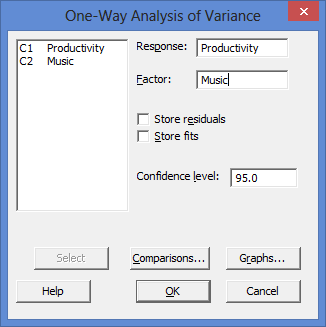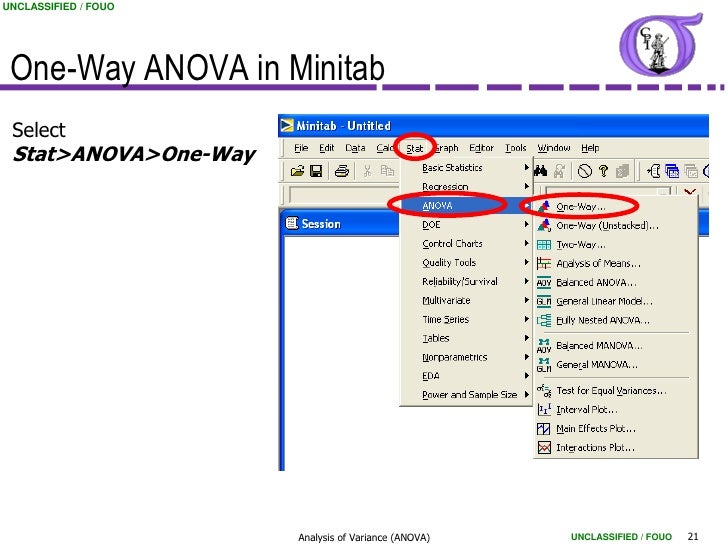

- Anova minitab how to#
- Anova minitab code#
Anova minitab how to#
Testing for a Difference between Two Group Means This set of notes shows how to use Stata to examine differences between two group means of a quantitative variable. You may subscript a variable or a matrix in Stata, but not in general an expression. There is a difference of 12 days between the two dates, which does not constitute one month. If your question is in what frequency people of different sexes have the disease, then you would calculate the row percentage (a / a+b and c / c+d).This will generate the Stata output for the two-way ANOVA, shown in the next section. Create a few measures CountToday:=CALCULATE(COUNTA(Records),DateToday,ALL(DateOther)) DIFFERENCES (number, ) In number, specify the column. Researchers occasionally receive data sets created in other programs where the variable names are in upper case letters. Thus 0/1 variables, when cross-tabbed, are displayed “flipped” in Stata. It can be used to compare mean differences in 2 or more groups. Property of each between them is largely a matter of personal preference.

The last row gives the marginal distribution of se-lection: among all artists, 19. It can also be hierarchical with mutiple levels.

table relating a row categorical variable (R rows) to a column categorical variable (C columns). Stata also lets you take advantage of built-in functions for variable transformations.Equivalently, it quantifies how much variation is due to the fact that the differences among columns is not the same for both rows.
Anova minitab code#
To convert them into a Stata date, the example code is shown in the second column. Just paste your files and click Find Difference! where the square of the differences between the observed and expected values in each cell, divided by the expected value, are added across all of the cells in the table. You may have seen various discussions about the differences between COUNT(*) and COUNT(1). Use the following steps to perform a Chi-Square Test of Independence to determine if there is a significant association between the following two variables: This function is especially useful in large workbooks with many different sets of data. The results in the third row show that lagged values of both pfce and gfcf cause gdp. 3) we are converting the function's returned object to rows, and displaying them. The next row gives the conditional distribution of selection for artists from the Northeast region, and so forth. It is a much more general tool than tsset. Even in Stata/SE with the possibility of a much larger Weighted Data in Stata. For example, suppose we want to highlight each cell in Sheet2 that has a different value from the corresponding cell in Sheet1. A researcher can see difference effects of grade on wage by race quickly. The confidence interval for the difference between Fat 1 and Fat 2 goes from a negative to a positive, so it does include zero. 
There is no need to calculate a LSD for replicate since you generally are not interested in comparing differences between replicate means. Since these limits do not include zero as a likely value of the population mean difference, the difference is significant at the 0. If the difference between the two groups is significant, the direction of the the inequality of the grouos, i. edu] On Behalf Of Chris Parker Sent: 23:20 To: In Python and Pandas, a DataFrame index can be anything (though you can also refer to rows by the row number see. Stata uses the in or of to determine whether the next word is the first element of the list or a type of list.








 0 kommentar(er)
0 kommentar(er)
